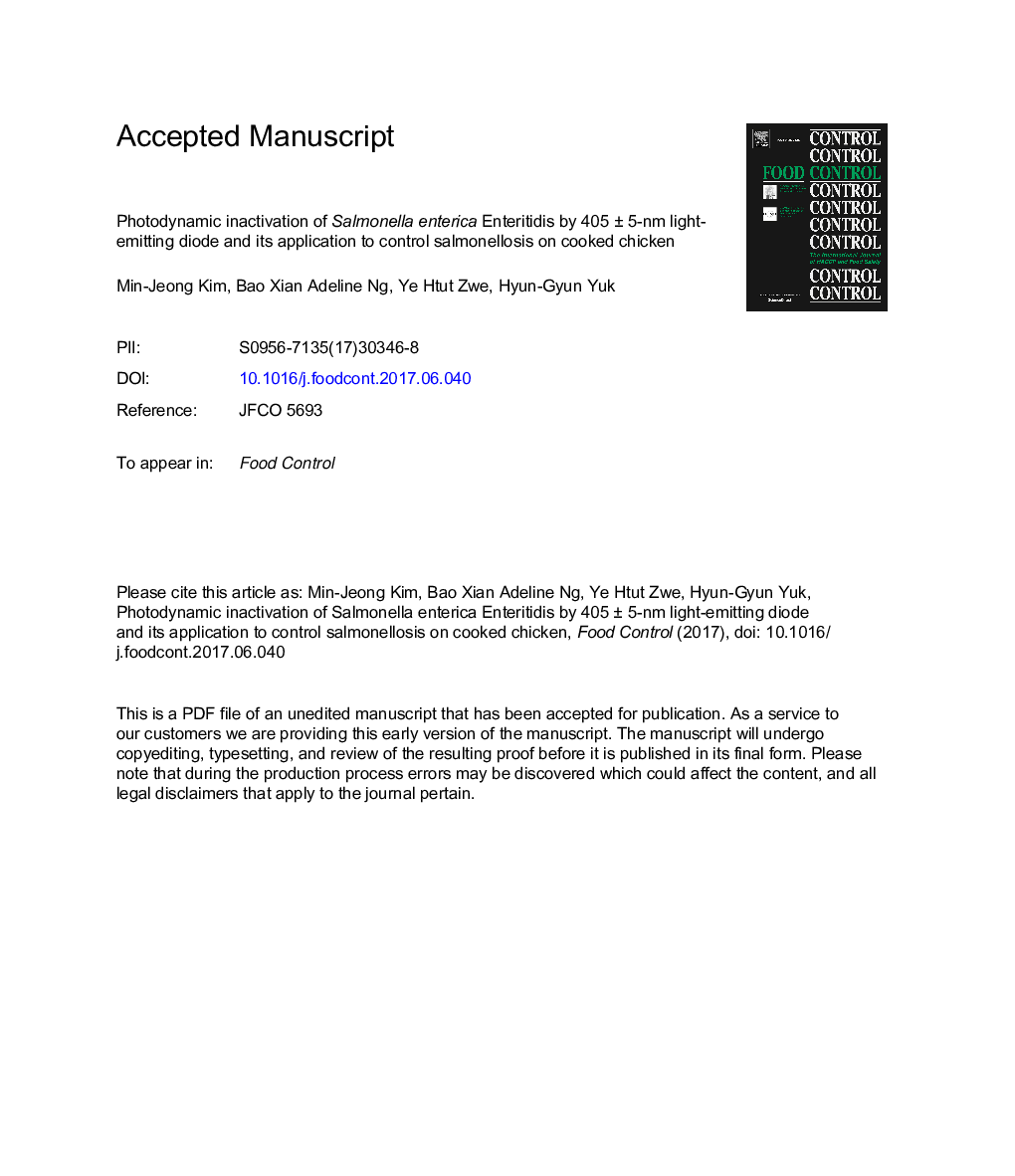| Article ID | Journal | Published Year | Pages | File Type |
|---|---|---|---|---|
| 5767164 | Food Control | 2017 | 38 Pages |
Abstract
A 405 ± 5-nm LED illumination was evaluated for its antibacterial effect against Salmonella Enteritidis in phosphate buffered saline (PBS) and on the surface of cooked chicken. Its antibacterial mechanism was also elucidated by determining the injury of cellular components using metabolic inhibitors. LED illuminated three S. Enteritidis strains in PBS at doses as high as 0.45 kJ/cm2 (for 7.5 h) and on cooked chicken at doses of 1.58-3.80 kJ/cm2 (for 20-48 h) at 4, 10, and 20 °C. Results showed that illumination inactivated 1.4-2.1 log CFU/ml of populations in PBS at 0.45 kJ/cm2, indicating that S. Enteritidis 130 was more susceptible to illumination than 124 and 125 strains. At 4 °C, Salmonella populations on illuminated cooked chicken decreased by 0.8-0.9 log CFU/cm2 at 3.80 kJ/cm2, whereas bacterial growth inhibition and delay were observed by illumination at 10 and 20 °C, respectively, regardless of bacterial strain. These results indicate that illumination temperature significantly (P â¤Â 0.05) influenced the antibacterial effect of LED on cooked chicken. LED illumination at 4 °C resulted in the incapability of Salmonella cells to repair cellular damage related to metabolism of DNA, RNA, protein, and cell wall. These results suggest that 405 ± 5-nm LEDs under refrigeration conditions could control Salmonella linked to cooked chicken.
Related Topics
Life Sciences
Agricultural and Biological Sciences
Food Science
Authors
Min-Jeong Kim, Bao Xian Adeline Ng, Ye Htut Zwe, Hyun-Gyun Yuk,
